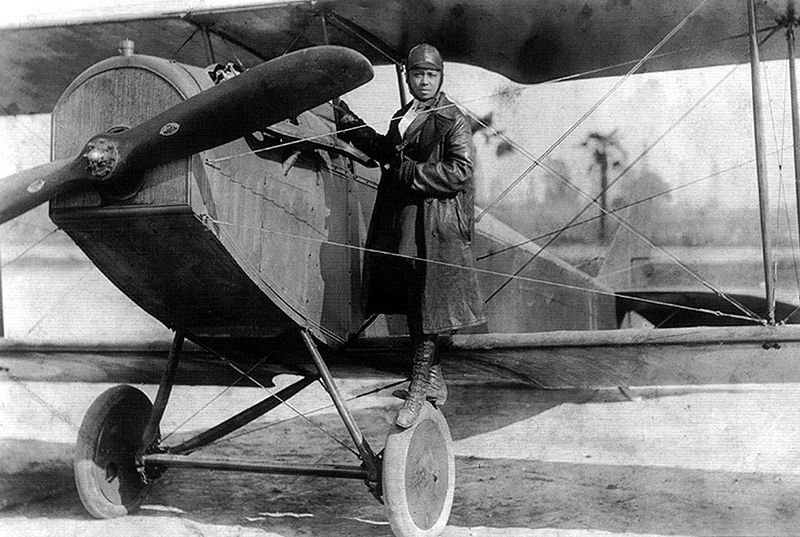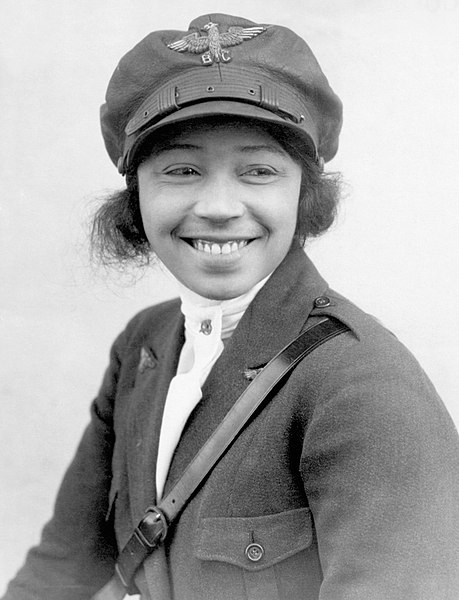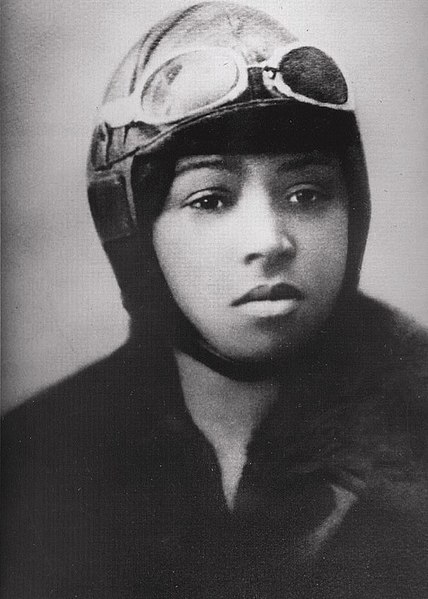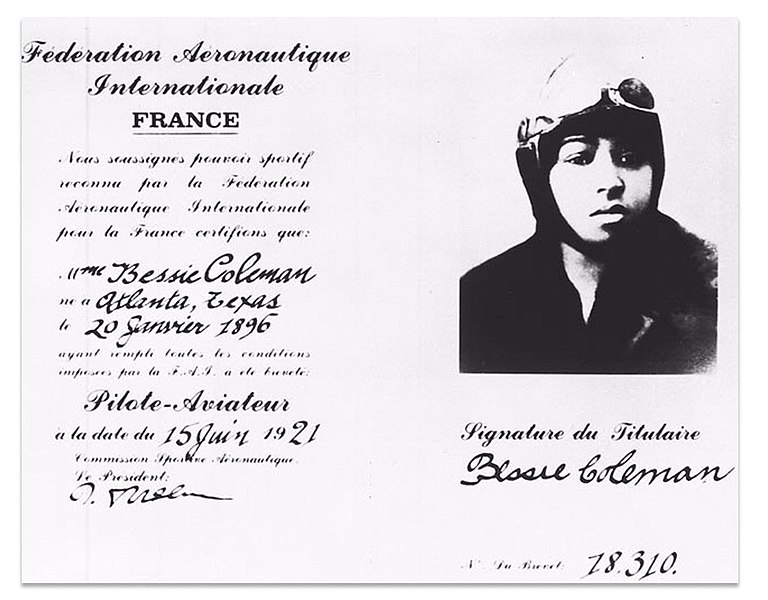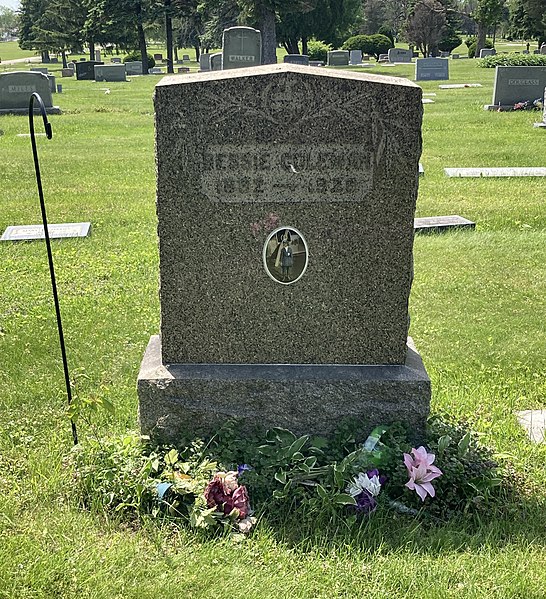Prepare to be charmed by Bessie Coleman’s engaging and inspiring life, a remarkable lady who surmounted innumerable hurdles to reach greatness. Her story exemplifies ingenuity and defiance of societal norms. Bessie Coleman became the first African American woman to receive a pilot’s license with unshakable courage, unwavering determination, and unwavering tenacity. Despite multiple failures along the road, her steadfast attitude left an indelible mark that is still felt today.
Who is Bessie Coleman?
Born into a large family in Atlanta, Texas, in 1892, Bessie Coleman’s early years were marked by the challenges faced by her African American and Cherokee heritage. Growing up as the tenth of thirteen children, Bessie experienced the harsh reality of life, with only nine siblings surviving into adulthood.
Despite their limited resources, Bessie’s thirst for knowledge led her to start school at the age of six. Each day, she embarked on a four-mile journey to a segregated one-room school. Undeterred by the arduous trek, Bessie quickly gained a reputation as a math prodigy and nurtured her love for learning. Her dedication remained unwavering as she graduated from the same elementary school, exemplifying her remarkable perseverance in the face of adversity.
Bessie’s upbringing was far from easy. Growing up in Waxahachie, Texas, she spent her formative years assisting her family in gathering cotton, adding to the hardships she faced. However, her passion for education and determination to excel remained steadfast, even amidst the challenges of balancing school, household chores, and religious commitments.
In 1901, when Bessie was just nine years old, her father made the decision to uproot the family and seek better opportunities in Oklahoma, then known as Indian Territory. However, Bessie’s parents and siblings stayed behind, worsening the family’s financial situation. This forced Bessie to take on even more responsibilities to help support her family.
Undeterred by these circumstances, Bessie’s drive to overcome obstacles shone through. At the age of 12, she was awarded a full scholarship to attend the Missionary Baptist Church School, providing her with an invaluable educational opportunity. Although she hoped to continue her studies there, the financial burden became too heavy for her family to bear.
Nevertheless, Bessie’s unwavering determination pushed her forward. At the age of 18, she embarked on a journey to save money and attend Oklahoma Colored Agricultural and Normal University in Langston. While she managed to complete one term with her savings, financial constraints forced her to return home. Despite this setback, Bessie refused to be deterred, continuing to work tirelessly in pursuit of her dreams.
Bessie Coleman’s Unyielding Pursuit of the Skies
In 1915, Bessie Coleman took a daring leap by leaving her family behind and venturing to Chicago, Illinois, a place far removed from her familiar surroundings. This move marked a significant milestone for Bessie, as she had never before resided so far away from her loved ones. Her decision was not without its challenges, but she embraced the opportunity for personal growth and exploration.
During her time working as a manicurist at Chicago’s White Sox Barber Shop, Bessie’s path intertwined with a fascinating array of individuals, including aviators who had recently returned from the First World War. As she listened to their captivating stories, a deep fascination for airplanes and the art of flying ignited within her.
Driven by her dream, Bessie took on a second job managing a chili parlor, aiming to save enough money for flying lessons. However, she soon encountered a disheartening reality—American aviation schools at that time shut their doors to both women and people of color. Despite this discouraging truth, Bessie refused to allow it to dampen her resolve.
Fortune smiled upon her when she found an ally in Robert S. Abbott, the influential founder, and publisher of a Chicago newspaper. Recognizing Bessie’s talent and unwavering determination, Abbott became a staunch supporter of her aspirations and encouraged her to seek aviation training in another country. Bessie’s unwavering desire to pursue flying lessons caught the attention of financier Jesse Binga, who shared her story in his newspaper, the Defender. Together, they pooled their resources to finance Bessie’s education in France, where she could fulfill her long-held dream of becoming a pilot.
Defying Boundaries in the Field of Aviation
Denied admission to American flying schools due to gender and ethnicity, Bessie Coleman refused to surrender her soaring ambitions. Determined to achieve her dream, she embarked on a transformative journey, boarding a flight to Paris, France, where she would pursue her pilot’s license. Notably, before departing for France, Bessie had diligently studied French at the renowned Berlitz Language Schools in Chicago.
Arriving in Paris on November 20, 1920, Bessie’s life took a remarkable turn. Under the guidance of the esteemed École d’Aviation des Frères Caudron, she mastered the art of flying a Nieuport 564 biplane, navigating its distinctive controls—a vertical stick resembling a baseball bat and a rudder bar positioned beneath the pilot’s feet.
On June 15, 1921, Bessie Coleman, an African-American Native American woman, shattered barriers once again as she received her pilot’s license. Her achievement resonated far beyond personal triumph; she became the first person of color and the first Native American to be internationally certified to fly by the Fédération Aéronautique Internationale. This groundbreaking milestone propelled Bessie and paved the way for women and minorities in the aviation industry.
Eager to refine her skills, Bessie dedicated the following months to honing her flying prowess. With the guidance of a renowned French ace pilot based in Paris, she immersed herself in daring stunts and acrobatic maneuvers, captivating audiences with her audacious displays.
In September 1921, Bessie Coleman made her triumphant return to the United States, welcomed with open arms and a grand parade in her honor in New York City. Newspapers across the nation featured her inspiring story, quickly elevating her to the status of an icon and an inspiration for countless young women and people of color.
Coleman’s Daring Journey Continues
In her quest to sustain herself as a civilian flyer, Bessie Coleman recognized the need to venture into the realm of stunt piloting, captivating paying audiences with breathtaking airborne tricks. Although she initially struggled to find a suitable teacher in Chicago, her unyielding determination led her back to Europe in February 1922 for further aviation education. Coleman spent two months studying in France and seized the opportunity to meet with Anthony Fokker, a renowned aircraft designer, in the Netherlands. She also visited the Fokker Corporation in Germany, seeking guidance from their top pilots. Armed with newfound knowledge and skills, she embarked on her exhibition pilot career upon returning to the United States.
As Coleman’s fame soared, she earned the moniker “Queen Bess” and found herself invited to prestigious gatherings. During World War I, she predominantly piloted Curtiss JN-4 Jenny biplanes and other aircraft still in service. On September 3, 1922, she made her debut at an American airshow commemorating the all-black 369th Infantry Regiment, known as the “Harlem Hellfighters.” Organized by her friends Abbott and the Chicago Defender newspaper, the event took place at Curtiss Field in the suburbs of New York. Amidst performances by eight renowned American ace pilots and a daring leap by black parachutist Hubert Julian, Coleman was hailed as “the world’s greatest woman flier.”
Six weeks later, Coleman returned to Chicago for another exhilarating air show. This time, she astounded the crowd with acrobatic feats dedicated to the 370th Infantry Regiment, which had served in World War I. She fearlessly executed near-ground dips, loops, and figure eights at the Checkerboard Airdrome, now home to the Hines Veterans Administration Medical Center, Loyola Hospital in Maywood, and the adjoining Cook County Forest Preserve. A sizable and appreciative audience witnessed her remarkable skills.
Driven by her multifaceted ambitions, Bessie Coleman remained resolute. Despite the thrill of stunt flying and the adoration of the crowd, she never forgot her childhood determination to “amount to something.” Criticized by the press for her opportunistic nature and showy flair, Coleman established herself as a skilled and audacious pilot, willing to push herself and her abilities to the limits.
Unfortunately, Coleman’s path was not without setbacks. In February 1923, her plane stalled and crashed during a performance in Los Angeles, resulting in a damaged leg and three broken ribs. Undeterred by the incident, she remained committed to promoting aviation and fighting against racism. Coleman embarked on speaking tours, sharing her passion for aviation and advocating for African American rights throughout the country. She boldly defied segregation and discrimination by refusing to participate in aviation activities that excluded people of color.
During one of her speaking engagements in Orlando, Florida, Coleman encountered Reverend Hezakiah Hill and his wife Viola, who warmly embraced her, offering her a home in the parsonage of Mount Zion Missionary Baptist Church. Treated like family, they encouraged her to establish a beauty shop in Orlando as a means to save money for her own aircraft.
Coleman’s steadfast values and unwavering commitment to combat prejudice were evident in her refusal to participate in the film “Shadow and Sunshine,” which portrayed negative stereotypes of African Americans. Though she mourned the missed fame and financial benefits, she chose to prioritize her principles over personal gain.
Her enduring legacy served as an inspiration for future generations of African American aviators, including Lieutenant William J. Powell, who dedicated his book “Black Wings” to her memory and established the Bessie Coleman Aero Club in her honor.
Death and Legacy
The news of Bessie Coleman’s untimely death struck the aviation community, particularly African Americans, with shock and devastation. Her tragic fate served as a stark reminder of the challenges faced by early aviators, who often took to the skies in perilous and poorly maintained aircraft.
The African-American press extensively covered Coleman’s passing, paying tribute to her remarkable life and extraordinary achievements. In Chicago, where she had resided for many years, Coleman’s funeral drew an estimated crowd of 10,000 mourners. The services at Pilgrim Baptist Church were led by Ida B. Wells, a prominent civil rights activist, adding a touch of solemnity to the proceedings.
Coleman’s impact on aviation was profound, despite the brevity of her career. Through her accomplishments, she shattered the belief that African Americans could not excel as aviators, inspiring countless young individuals to pursue their own dreams. Lieutenant William J. Powell, a World War I veteran who recognized the significance of Coleman’s example, established the Bessie Coleman Aero Club in 1929, ensuring that her legacy would endure for future generations.
